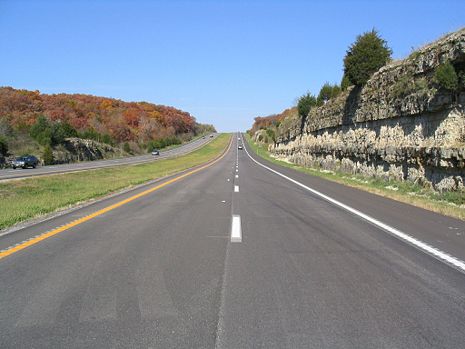Difference between revisions of "Category:620 Pavement Marking"
Jump to navigation
Jump to search
m (→Pavement Marking Guidelines: Per Traffic, two notes added for clarification of table info) |
m (Per Traffic, numerous revisions because several non-standard JSPs (including epoxy and high build pavement markings) were combined into standard JSPs.) |
||
| Line 1: | Line 1: | ||
| − | + | [[Image:620 Delineation System 3.jpg|465px|left]] | |
| − | |||
| − | |||
| − | |||
| − | |||
| − | |||
| − | |||
| − | | | ||
| − | | | ||
| − | |||
| − | |||
| − | |||
| − | |||
| − | |||
| − | |||
| − | |||
| − | |||
| + | {|style="padding: 0.3em; margin-right:145px; border:2px solid #a9a9a9; text-align:center; font-size: 95%; background:#f5f5f5" width="300px" align="right" | ||
| + | |- | ||
| + | |<center>'''Other Resources'''</center> | ||
| + | |- | ||
| + | |[http://wwwi/intranet/tr/documents/StripingOperationsManual_FINAL.pdf Pavement Marking Operations Direction (Practical Operations Pavement Marking Implementation Plan)] | ||
| + | |- | ||
| + | |[http://wwwi/intranet/tr/documents/StripingCommunicationsPlan.pdf Striping Communications Plan] | ||
| + | |} | ||
| Line 28: | Line 20: | ||
| − | |||
| − | |||
| − | |||
| − | |||
| − | |||
| − | |||
| − | |||
| − | |||
| − | |||
| − | |||
| − | |||
| − | |||
| − | |||
| − | |||
| − | |||
| − | |||
| Line 59: | Line 35: | ||
{| border="1" class="wikitable" style="margin: 1em auto 1em auto" style="text-align:center" | {| border="1" class="wikitable" style="margin: 1em auto 1em auto" style="text-align:center" | ||
|- | |- | ||
| − | ! !! !! Colspan=" | + | ! !! !! Colspan="3" style="background:#BEBEBE"|Divided Highways !! style="background:#BEBEBE"|Undivided Highways!! style="background:#BEBEBE"|All Classifications |
| − | |||
| − | |||
| − | |||
| − | |||
| − | |||
| − | |||
|- | |- | ||
| − | | | + | ! !! !! style="background:#BEBEBE"|Grooved In Lane Lines<sup>1</sup> !! style="background:#BEBEBE"|Other Lane Lines<sup>1</sup> !! style="background:#BEBEBE"|Centerlines and Edgelines!! style="background:#BEBEBE"|Centerlines and Edgelines!! style="background:#BEBEBE"|Intersection Markings |
|- | |- | ||
| − | |rowspan=" | + | |rowspan="2" align="center" style="background:#F5F5F7"|'''Contractor Installations''' || align="center" style="width:15%"| '''Major Roads''' || Epoxy or high build paint with wet reflective beads including contrast markings on concrete. || Not applicable||Acrylic waterborne paint with type P beads || Acrylic waterborne paint with type P beads ||rowspan="2"|Type 2 tape |
|- | |- | ||
| − | |align="center"|''' | + | | align="center"|'''Minor Roads''' ||Not applicable||colspan="3"| Acrylic waterborne paint with type P beads |
|- | |- | ||
| − | |align="center"|''' | + | |rowspan="4" align="center" style="background:#F5F5F7"| '''MoDOT Forces''' ||align="center"| '''Major Roads''' – shall be striped by Memorial Day unless there is a performing durable marking||Acrylic waterborne paint with wet reflective beads||colspan="3" rowspan="4"| Acrylic waterborne paint with type PM beads||rowspan="4"|Type 2 tape, preformed thermoplastic or acrylic waterborne paint |
|- | |- | ||
| − | |align="center"| ''' | + | |align="center"|'''Regionally Significant Roads''' – shall be striped annually ||rowspan="3"|Not applicable |
|- | |- | ||
| − | |align="center"|''' | + | |align="center"|'''Other Minor Roads''' – maximum of 50 percent striped annually |
|- | |- | ||
| − | | | + | |align="center"|'''Surface Treatments''' |
|- | |- | ||
| − | |colspan=" | + | |colspan="7" align="left"|<sup>'''1'''</sup> Lane Lines include all white lines other than edgelines. They are typically dashed lines, but also include some solid lines when separating turn lanes or areas where lane changes are not recommended. |
|} | |} | ||
Revision as of 10:43, 26 September 2012
| Pavement Marking Operations Direction (Practical Operations Pavement Marking Implementation Plan) |
| Striping Communications Plan |
Pavement Marking Guidelines
| Divided Highways | Undivided Highways | All Classifications | ||||
|---|---|---|---|---|---|---|
| Grooved In Lane Lines1 | Other Lane Lines1 | Centerlines and Edgelines | Centerlines and Edgelines | Intersection Markings | ||
| Contractor Installations | Major Roads | Epoxy or high build paint with wet reflective beads including contrast markings on concrete. | Not applicable | Acrylic waterborne paint with type P beads | Acrylic waterborne paint with type P beads | Type 2 tape |
| Minor Roads | Not applicable | Acrylic waterborne paint with type P beads | ||||
| MoDOT Forces | Major Roads – shall be striped by Memorial Day unless there is a performing durable marking | Acrylic waterborne paint with wet reflective beads | Acrylic waterborne paint with type PM beads | Type 2 tape, preformed thermoplastic or acrylic waterborne paint | ||
| Regionally Significant Roads – shall be striped annually | Not applicable | |||||
| Other Minor Roads – maximum of 50 percent striped annually | ||||||
| Surface Treatments | ||||||
| 1 Lane Lines include all white lines other than edgelines. They are typically dashed lines, but also include some solid lines when separating turn lanes or areas where lane changes are not recommended. | ||||||
Articles in "620 Pavement Marking"
The following 14 pages are in this category, out of 14 total.
6
- 620.1 General (MUTCD Chapter 3A)
- 620.2 Pavement and Curb Markings (MUTCD Chapter 3B)
- 620.3 Roundabout Markings (MUTCD Chapter 3C)
- 620.4 Markings for Preferential Lanes (MUTCD Chapter 3D)
- 620.5 Delineators (MUTCD Chapter 3F)
- 620.6 Colored Pavements
- 620.7 Channelizing Devices Used for Emphasis or Pavement Marking Patterns
- 620.8 Islands
- 620.9 Rumble Strip Markings
- 620.10 Operational Procedures and Safety
- 620.11 Guidelines for Using Water-Borne Traffic Paint
- 620.12 Construction Inspection for Sec 620
- 620.13 Measurement of Retroreflectivity by Handheld Retroreflectometers
- 620.14 3M Installation Contract
